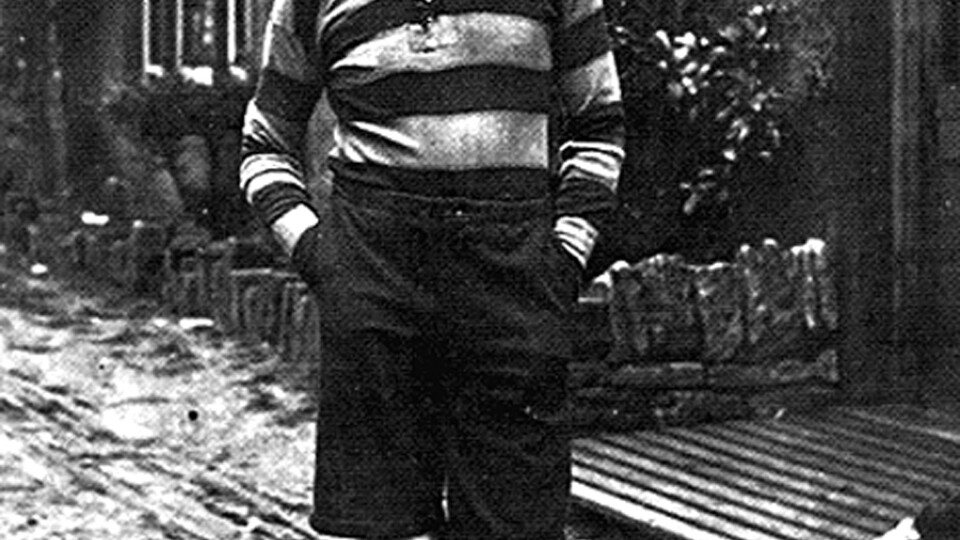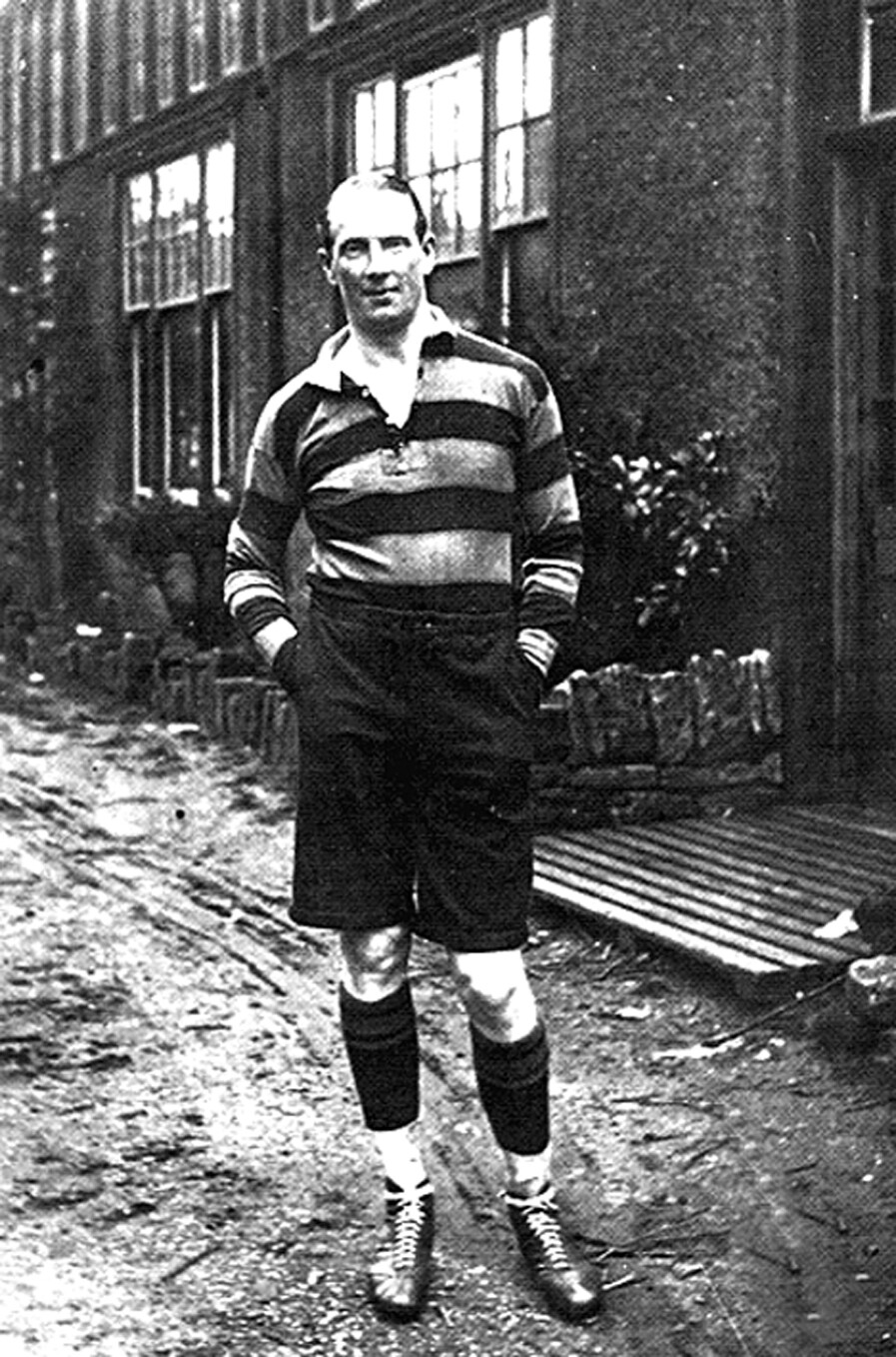As the Club today celebrates the 100-year anniversary of the very first Mobbs Memorial Match, Saints Historian Graham McKechnie reflects on a century of commemorating one of the greatest ever to wear Black, Green and Gold.
People wanted to do something when they heard that Edgar Mobbs had been killed in July 1917. His death was a calamity for the town, and the natural human instinct was to try to find a positive outcome from such an appalling loss. The first thought was to raise money for a statue which was soon organised by the newspapers – a statue that stands today in Abington Square. And then came the thought that they should play an annual match in Mobbs’ memory, a series of matches that began on 10 February 1921 and continues to this day; the Mobbs Memorial Match.

Jimmy Minahan was the driving force behind the match. As secretary of the East Midlands, this garrulous Irishman he had been a close friend of Mobbs. Although 1921 is often referred to as being the first Mobbs Memorial Match, the origins actually lie earlier, in a game that Minahan staged at the County Ground in Northampton. This is the match which is first advertised as the ‘Mobbs Memorial Match’, on 9 December 1917 – just over four months after he was killed in action. It was contested between a team of South African servicemen and team of New Zealanders, with the takings going to the 650 prisoners-of-war from the County who were languishing in Germany.
For a town starved of live sport, this being just the second rugby match since the outbreak of the First World War, it was a very popular event. More than five thousand watched two strong teams – both including internationals – scrap it out, with the New Zealanders winning 14-0. After the match it was made clear that the intention was that this would become an annual event, with EHD Sewell saying that, “After the war, if we are ever to know such a time, the Barbarians will bring a team to play against the East Midlands Rugby Union every year.”
Minahan organised two more Mobbs games in the winter of 1918, the first between the Welsh Guards and Australian servicemen, followed by the Royal Naval Depot against the Machine Gun Corps. Both raised money for the prisoners of war, but this time the proceeds were split with the Mobbs statue fund. Neither was called a ‘Mobbs Memorial Match’ in the press. The next of those – so the second proper Mobbs match – came in December 1919 when it was played at Franklin’s Gardens for the first time.
Minahan initially advertised the match as the East Midlands versus an ‘All England XV’ and for the first time the “proceeds of the game [were] given to the furtherance of local junior football”, a principle that remains today. By the time the fixture was played (on Boxing Day 1919) after several withdrawals from either side, the teams lined up as Saints versus the East Midlands, with the former winning 11-10 – Freddie Blakiston scoring for the home team and Ted Butcher, a Mobbs’ Own man from Devon, crossing for the East Midlands.
And so, we come to 10 February 1921 – the game considered as the first proper Mobbs Memorial Match. It’s the game where Minahan’s vision is finally realised – the East Midlands playing the Barbarians at Franklin’s Gardens, bringing together three hugely important elements of Edgar Mobbs’ life. He played for the Barbarians eleven times and was “a true Barbarian”, according to one of the team from that day. “He was welcomed by all whenever he came on tour, by friends, opponents and crowds alike….His cheery optimism was a tonic for all, and he always came up smiling.”

Saints provided the bulk of the East Midlands team, but seven clubs were represented in total. The Barbarians were drawn from the likes of Harlequins, Blackheath, Oxford and Cambridge Universities. Two were full England internationals, many were close friends of Mobbs. For one man in particular it must have been a particularly poignant occasion. Saints forward Albert Luck was a local man from Semilong, who we know about thanks to the recent Mobbs’ Own Project. He didn’t play alongside Mobbs for Saints, but at the age of nineteen chose to join the army with him in September 1914 as one of the original Mobbs’ Own. As part of the 7th Northamptonshire Regiment he was wounded once and awarded the Military Medal twice. Over the course of the war, he watched many of his Mobbs’ Own comrades wounded and killed. Yet he survived and he was there playing for the East Midlands in the match that bore his beloved Colonel’s name. You can only wonder what emotions he was experiencing on that afternoon.
The game went the Barbarians’ way, winning 22-14 in front of a crowd that numbered, according to the newspapers, anywhere between two and ten thousand. The game was refereed by the great England and Harlequins player Adrian Stoop, who caused chaos by blowing for time ten minutes early. The crowd let him know his error and the players, some of whom were already in the bath, were dragged back out.
And so the first proper Mobbs Memorial Match came to an end, and all that remained was a post-match dinner at the Peacock Hotel. They drank to Mobbs’ memory and remembered him as the finest of sportsmen. “A better fellow for playing the game and for teaching others to play never lived,” said Emile de Lissa, the Barbarians’ secretary.
One hundred years later and that spirit lives on. Promoting the game and encouraging young players and local clubs was very close to Mobbs’ heart. The men who contested those early games may be long gone, but their successors – at Saints, Bedford and the Army – continue that tradition and ensure that Mobbs’ legacy is still felt in the East Midlands today.




